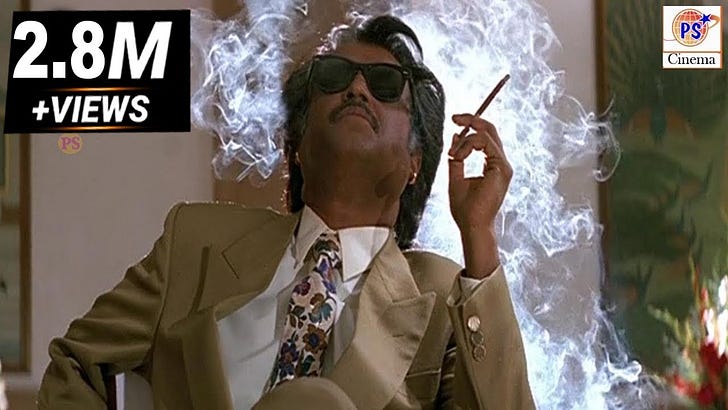The Influence of Cinema on Health Behaviors and Social Change
In a recent discussion with my students about behavioral change in health promotion, we delved into the impact of movies and media on certain behavioral patterns. This conversation led us to explore how cinema can influence health behaviors and drive social change.
The Power of Iconic Scenes
One example I shared was from a Tamil movie featuring the superstar Rajnikanth. The film, titled Annamalai, includes a memorable scene where Rajnikanth's character makes a dramatic entrance into a boardroom. Accompanied by iconic background music, he sits in the Presidential chair, takes a puff of a cigar, and blows the smoke into the air. The camera focuses on his face, creating a striking visual as the smoke envelops the screen. Released in the early-nineties, this scene became famous in Tamil cinema. At that time, smoking was prevalent among the youth, and such portrayals might have encouraged fans to emulate these actions in real life.
Shifting Perceptions
Another example is the Malayalam movie Ravanaprabhu, which I watched on its release day. By then, Mohanlal had been ruling the Malayalam box office for nearly two decades. His character's introduction in the film features him with an unlit cigarette in his mouth, driving a Toyota Prado. Throughout the movie, he carries this unlit cigarette, and there is even a dialogue where he mentions that he no longer smokes but can’t fully let go. Before any significant fight, his character's first move is to blow the unlit cigarette into his opponent's face. This portrayal, though seemingly trivial, marked a significant shift in social perception regarding smoking. Released in the early 2000s, the film reflected the impact of mass media campaigns highlighting the adverse effects of tobacco on health. While this change in portrayal may not have persuaded fans to quit smoking, it could have at least prevented some from starting the habit.
The Concept of the Designated Driver
I also recalled learning about the term "designated driver" from a Hollywood movie during my school years. A designated driver is the person in a group who abstains from drinking to ensure everyone gets home safely. This concept stayed with me, and years later, while pursuing my master's in public health, I encountered a campaign by the Harvard School of Public Health promoting the designated driver concept. This campaign aimed to reduce drinking and driving and had a profound impact, reaching even students like me thousands of kilometers away in Kerala, southern India. The campaign involved reaching out to screenwriters to include the term "designated driver" in their scripts, making characters catalysts for change by promoting health through this concept. This is a prime example of using mass media to drive behavioral change in the general public.
Harvard Alcohol Project: Designated Driver
Balancing Creative Freedom and Social Responsibility
These examples highlight the influence of "mass movies," where the hero is a superstar with a massive fan base. In contrast, "realistic movies" should portray substance abuse as close to real life as possible. There is a delicate balance between creative freedom and socially responsible storytelling. By finding this balance, cinema can yield significant public health benefits.
In conclusion, cinema holds immense power to shape health behaviors and drive social change. By carefully crafting narratives and character portrayals, filmmakers can influence audiences positively, promoting healthier lifestyles and societal norms.




